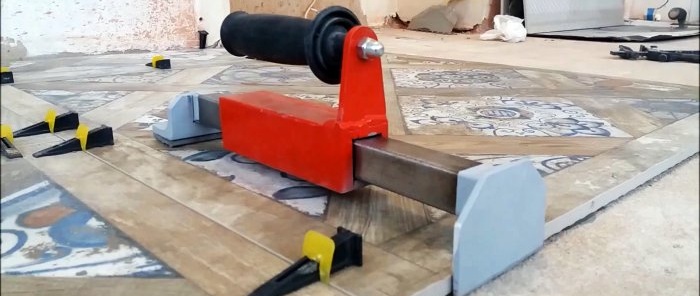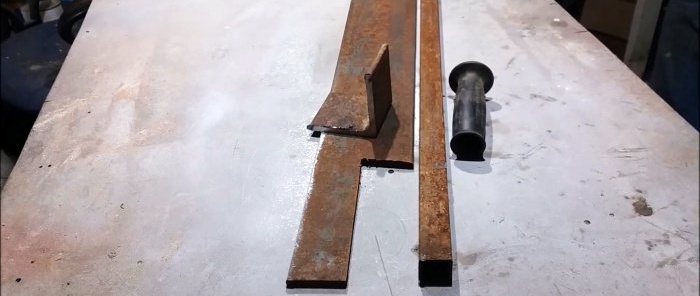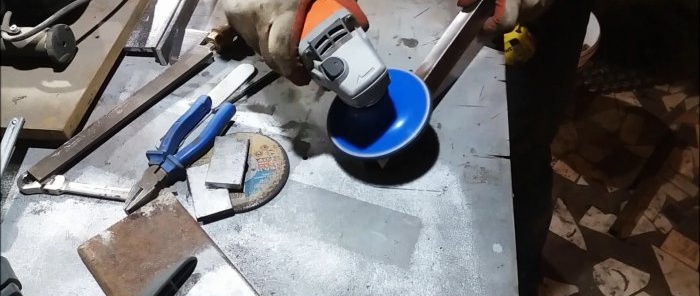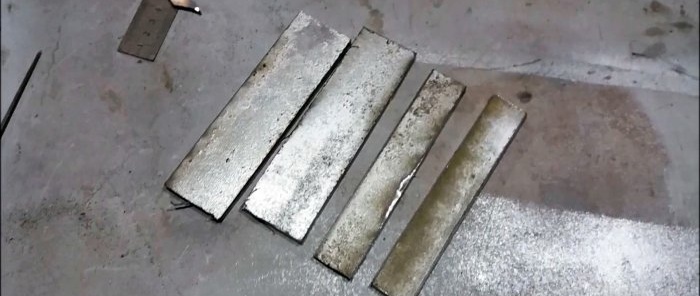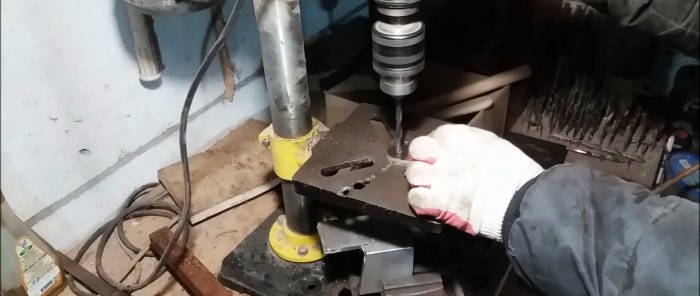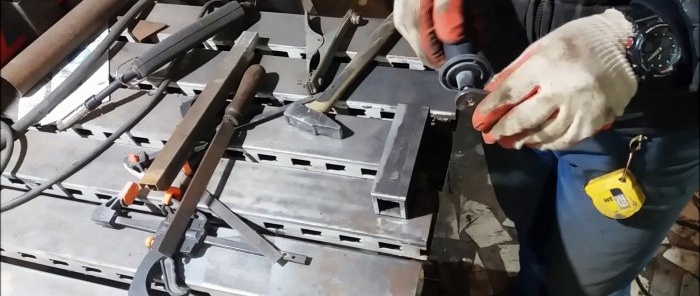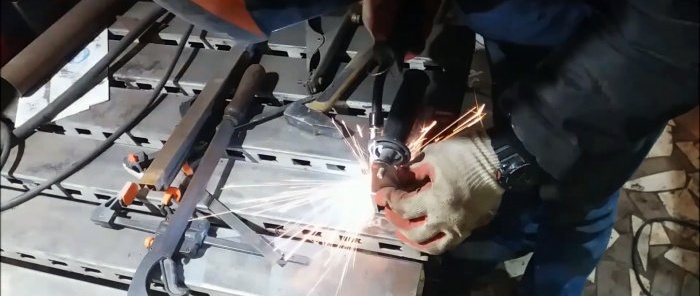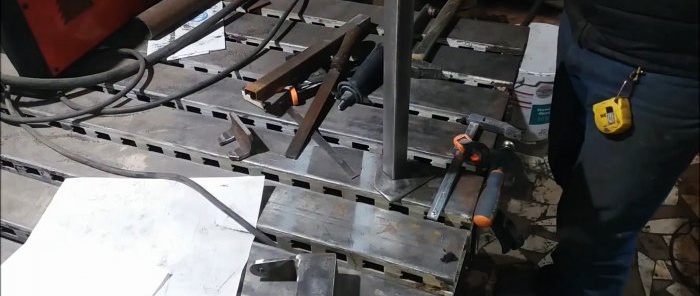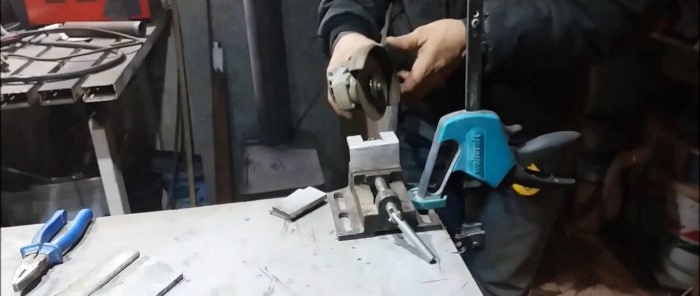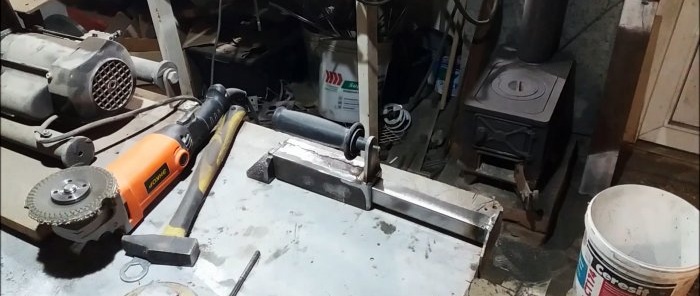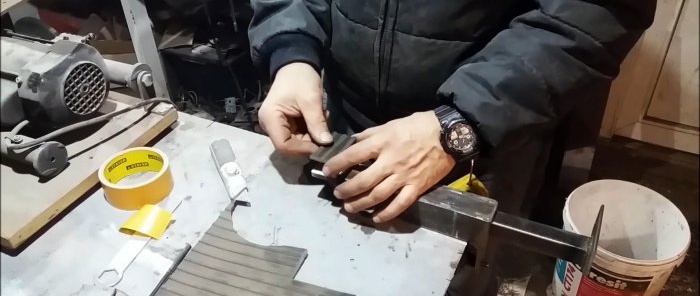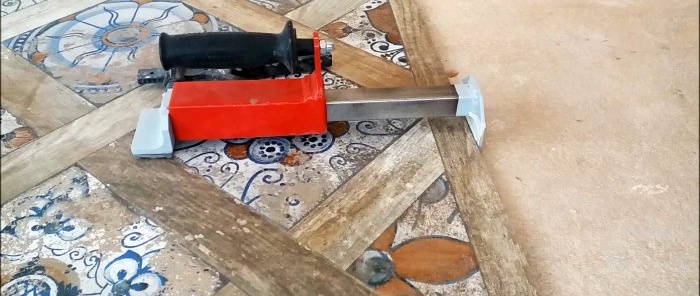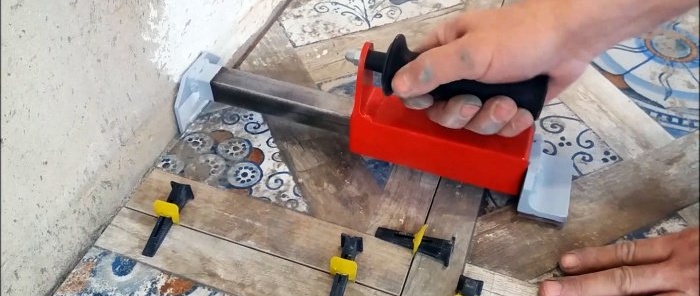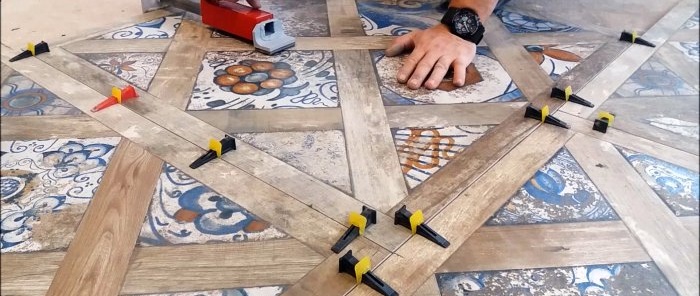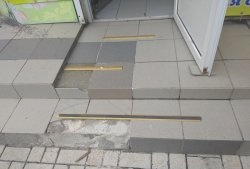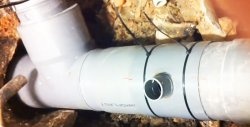With this tool, the seams between tiles will be perfect.
When laying large-format tiles, even with the SVP system, the seams often come apart, since it is difficult to move it with the adhesive after the additive. To prevent this from happening, you can make a reverse hammer. They are convenient for hitting tiles even under a wall, where an ordinary mallet is useless. In addition, when struck from the end of a tile, a reverse hammer will definitely not split it, so the tool is extremely useful and speeds up the finishing process many times over.
A reverse hammer is a piece of profile pipe with a blade and a stop along the edges. A short profile of larger diameter with an attached handle is put on the main pipe. When the latter moves sharply, it slides along the main pipe, hitting its stop, thereby moving the device along with the tile to which it is attached. For a reverse hammer to work properly, even with large-format tiles, it must be made of thick metal to increase its mass.
For the base of the hammer you will need a section of profile pipe 30-40 cm.
Underneath it is necessary to weld a larger square pipe that can slide on top. It is welded from 4 blanks cut from strip or sheet metal.
The length of the sliding pipe should be 2 times shorter than the guide.
An eyelet from a corner is welded to the sliding pipe. A hole is made in it, and a thread is cut to screw in the handle from the grinder.
A strip blade is welded to one edge of the main pipe, which will cling to the end of the tile. It should be wide for a sufficient area of contact with the tile, which will prevent splitting when tamping.
Next, a sliding pipe is put on the guide, and a corner stop is welded onto its remaining edge.
It will lie on the front side of the tile being tiled. The overhang of the stop should be at least 15 mm less than that of the catching blade. Next, a rubber pad is glued to the stop using glue or double-sided tape. It will prevent scratching and rubbing of the front surface of the tile.
The resulting instrument should be painted.
For better sliding and to avoid metallic grinding, it does not hurt to lubricate the guide pipe. A homemade reverse hammer can be used not only when laying tiles, but also laminate flooring. They are comfortable to work on both floors and walls.
Materials:
- strip or sheet metal with a cross-section of 4 mm or more;
- profile pipe 30x30 mm;
- corner 40x40 mm or more;
- grinder handle;
- rubber for cutting out the lining.
Reverse hammer manufacturing process
A reverse hammer is a piece of profile pipe with a blade and a stop along the edges. A short profile of larger diameter with an attached handle is put on the main pipe. When the latter moves sharply, it slides along the main pipe, hitting its stop, thereby moving the device along with the tile to which it is attached. For a reverse hammer to work properly, even with large-format tiles, it must be made of thick metal to increase its mass.
For the base of the hammer you will need a section of profile pipe 30-40 cm.
Underneath it is necessary to weld a larger square pipe that can slide on top. It is welded from 4 blanks cut from strip or sheet metal.
The length of the sliding pipe should be 2 times shorter than the guide.
An eyelet from a corner is welded to the sliding pipe. A hole is made in it, and a thread is cut to screw in the handle from the grinder.
A strip blade is welded to one edge of the main pipe, which will cling to the end of the tile. It should be wide for a sufficient area of contact with the tile, which will prevent splitting when tamping.
Next, a sliding pipe is put on the guide, and a corner stop is welded onto its remaining edge.
It will lie on the front side of the tile being tiled. The overhang of the stop should be at least 15 mm less than that of the catching blade. Next, a rubber pad is glued to the stop using glue or double-sided tape. It will prevent scratching and rubbing of the front surface of the tile.
The resulting instrument should be painted.
For better sliding and to avoid metallic grinding, it does not hurt to lubricate the guide pipe. A homemade reverse hammer can be used not only when laying tiles, but also laminate flooring. They are comfortable to work on both floors and walls.
Watch the video
Similar master classes
Particularly interesting
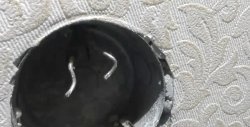
How to install a socket if there are short wires left
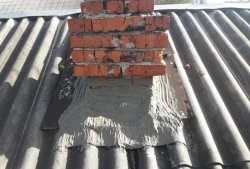
How to eliminate gaps between the chimney and slate
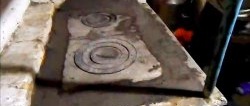
How to mix an ultra-reliable solution for the oven that does not give
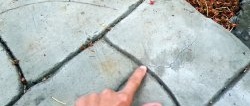
There will be no more cracks: What to add to concrete to make it
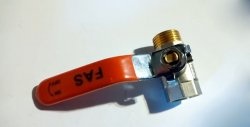
Never buy ball valves without checking with me
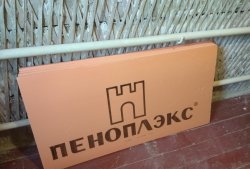
New technology for floor insulation with penoplex
Comments (0)

